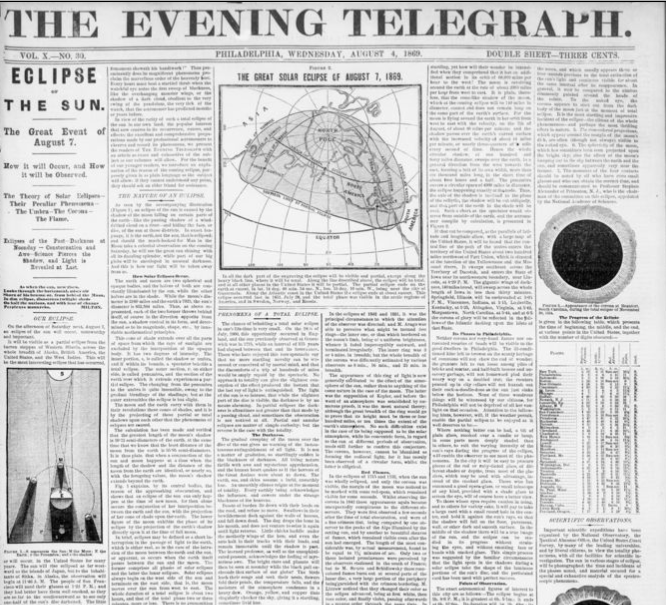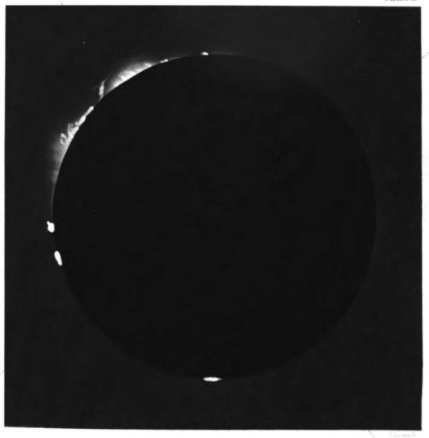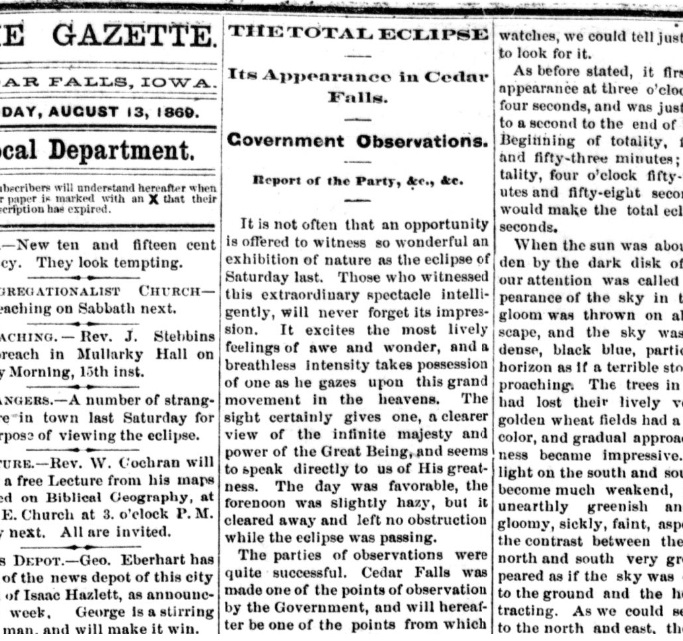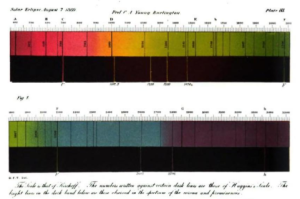 Today marks the 150th anniversary of the total solar eclipse of August 7, 1869. The path of totality started in Asiatic Russia, and covered a tiny swath of China and much of Siberia before crossing the Bering Strait into Alaska and Yukon, and then through parts of the present day provinces and states of British Columbia, Alberta, Saskatchewan, Montana, the Dakotas, Minnesota, Iowa, Nebraska, Missouri, Illinois, Kentucky, Tennessee, Virginia, West Virginia, and the Carolinas.
Today marks the 150th anniversary of the total solar eclipse of August 7, 1869. The path of totality started in Asiatic Russia, and covered a tiny swath of China and much of Siberia before crossing the Bering Strait into Alaska and Yukon, and then through parts of the present day provinces and states of British Columbia, Alberta, Saskatchewan, Montana, the Dakotas, Minnesota, Iowa, Nebraska, Missouri, Illinois, Kentucky, Tennessee, Virginia, West Virginia, and the Carolinas.
The eclipse wasn’t the first to be photographed. Those honors go to the eclipse of July 28, 1851, which, according to Wikipedia, produced the first scientifically usable photograph. It does have the distinction of being the first to provide detailed spectroscopic images of the corona, which revealed an element believe for many years to be “coronium“. It took 70 years to realize that the spectrographic line was not a new element, but instead iron at over a million degrees Kelvin. The image shown above left was prepared by Prof. Charles Augustus Young of Dartmouth College, who was part of a team at Burlington, Iowa. The same team produced the photo shown below:
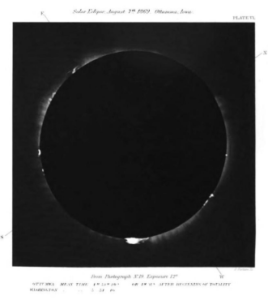 Another team left Burlington for Ottumwa, Iowa, but was beset by problems. They had forgotten their chronometer in Burlington, and the telescope clockwork was damaged in transit. Notwithstanding these difficulties, they managed 34 photographs, including four of totality, one of which is shown at left.
Another team left Burlington for Ottumwa, Iowa, but was beset by problems. They had forgotten their chronometer in Burlington, and the telescope clockwork was damaged in transit. Notwithstanding these difficulties, they managed 34 photographs, including four of totality, one of which is shown at left.
Another team was headed by Prof. William Harkness of the U.S. Naval Observatory. This team constructed a temporary observatory at the northwest corner of Second and Short Streets in Des Moines. Harkness reported that this vacant property on the west bank of the Des Moines River had a horizon almost devoid of obstructions. “Short Street” no longer exists, but according to the 1869 Des Moines city directory, it ran from the Des Moines River to Third Street (only a little more than a block, hence the name). From the description of the observatory being on the west bank, it would appear that the building was near the current site of Wells Fargo Arena.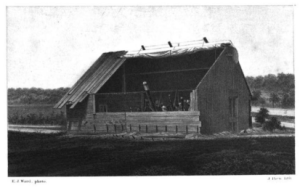
A local contractor, one F.T. Nelson was retained to build the structure, shown at right. This team also obtained multiple photographs and spectrograms. The sketch below is the eclipse as seen through their four inch telescope.

Carptenter F.T. Nelson’s listing in the 1869 city directory.
The August 13, 1869, issue of the Cedar Falls (IA) Gazette carried this account of the eclipse. Those of us who witnessed the 2017 eclipse concur in the accuracy of this report. Indeed, from our viewing point in Hastings, Nebraska, we also had the added tension that “the forenoon was slightly hazy, but it cleared away and left no obstruction while the eclipse was passing.”
THE TOTAL ECLIPSE
Its Appearance in Cedar Falls
Government Observations.
Report of the Party, &c., &c.
It is not often that an opportunity is offered to witness so wonderful an exhibition of nature as the eclipse of Saturday last. Those who witnessed this extraordinary spectacle intelligently, will never forget its impression. It excites the most lively feelings of awe and wonder, and a breathless intensity takes possession of one as he gazes upon this grand movement in the heavens. The sight certainly gives one, a clearer view of the infinite majesty and power of the Great Being, and seems to speak directly to us of His greatness. The day was favorable, the forenoon was slightly hazy, but it cleared away and left no obstruction while the eclipse was passing.
The parties of observations were quite successful. Cedar Falls was made one of the points of observation by the Government, and will hereafter be one of the points from wliich calculations will be made. The party sent out by the Government to take observations iu this city were Ed. W. Horr, son of Dr. Horr of the Smithsonian Institute, and Wm. I. Anderson and W. W. Wormood, of Dubuque.
References
- NASA, Total Solar Eclipse of 1869 August 07
- Wikipedia Solar Eclipse of August 7, 1869
- Physics Today, The North American eclipse of 1869
- Reports of Observations of the Total Eclipse of the Sun, August 7, 1869 By United States Naval Observatory. Nautical Almanac Office.
- Reports on Observation of the Total Eclipse of the Sun August 7, 1869


